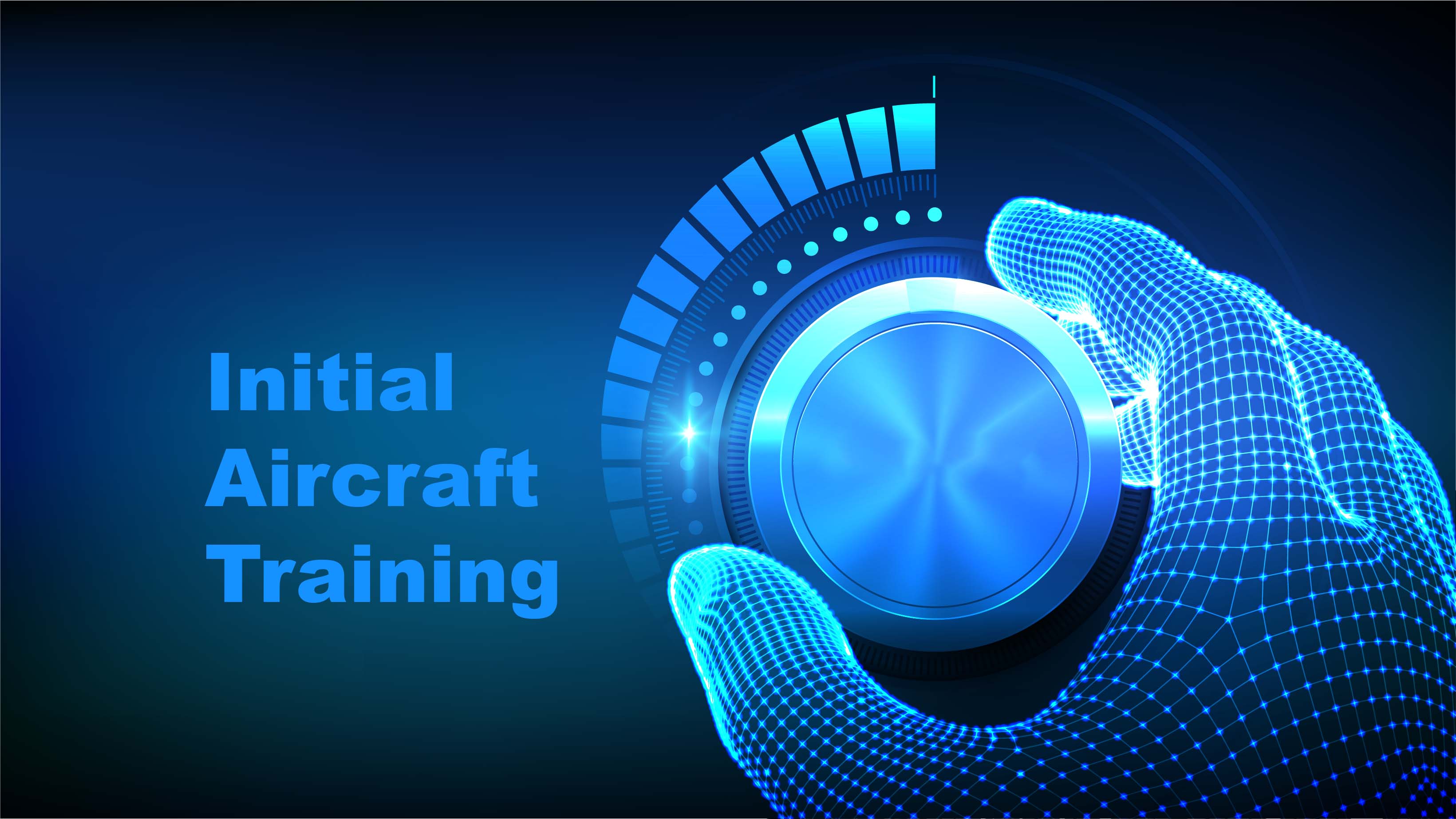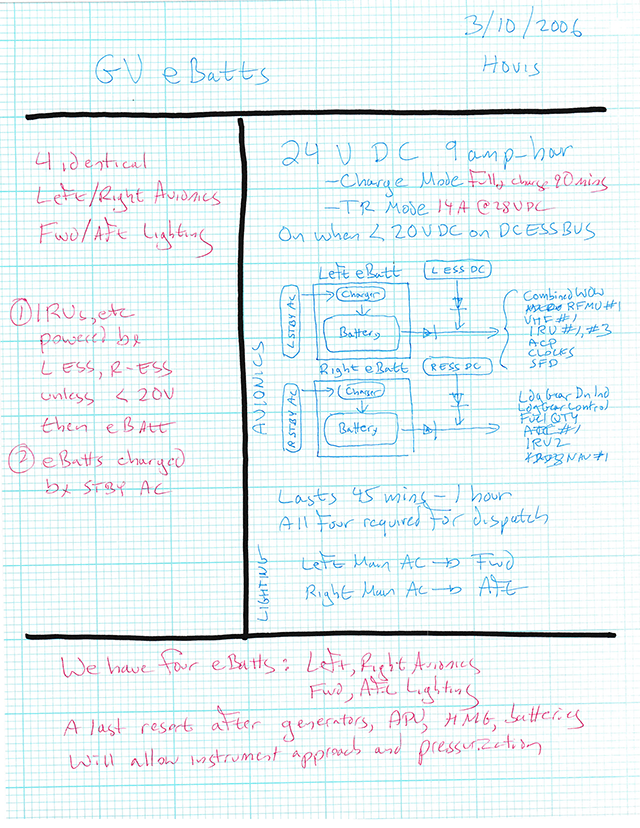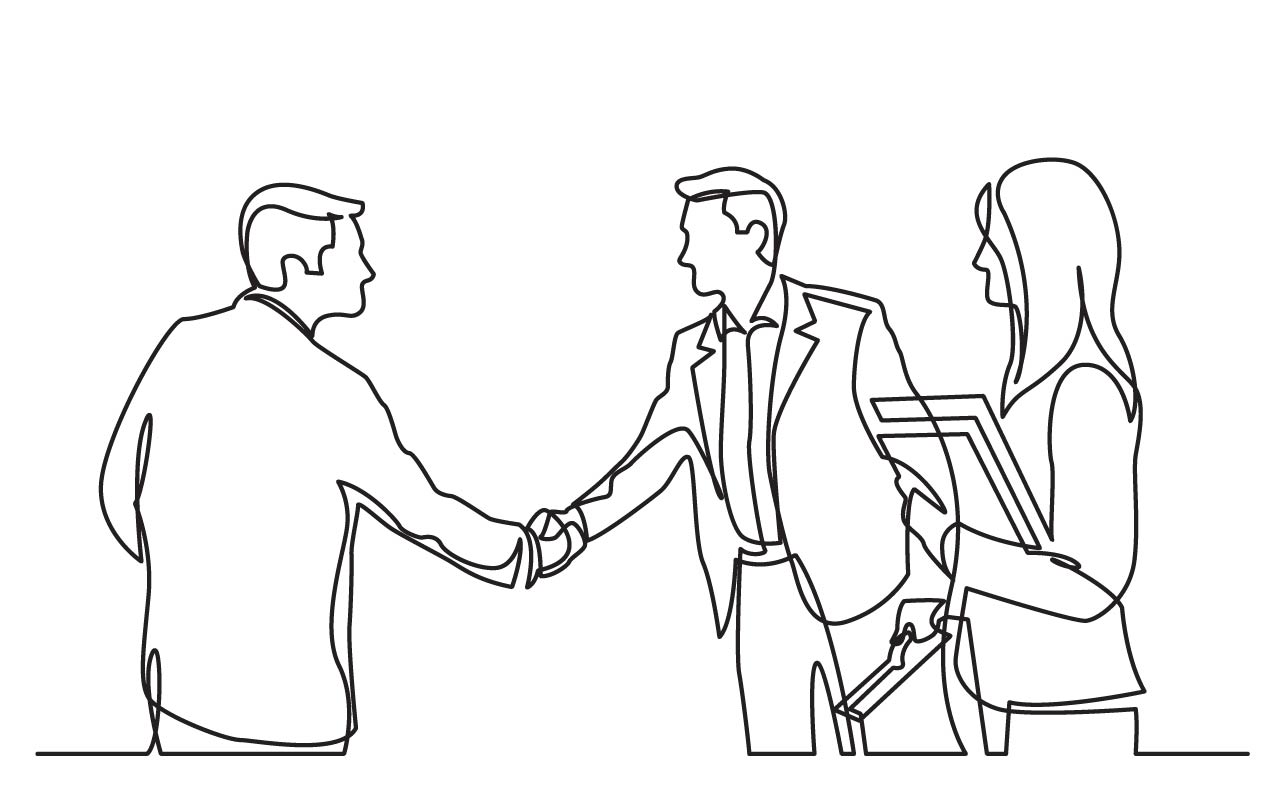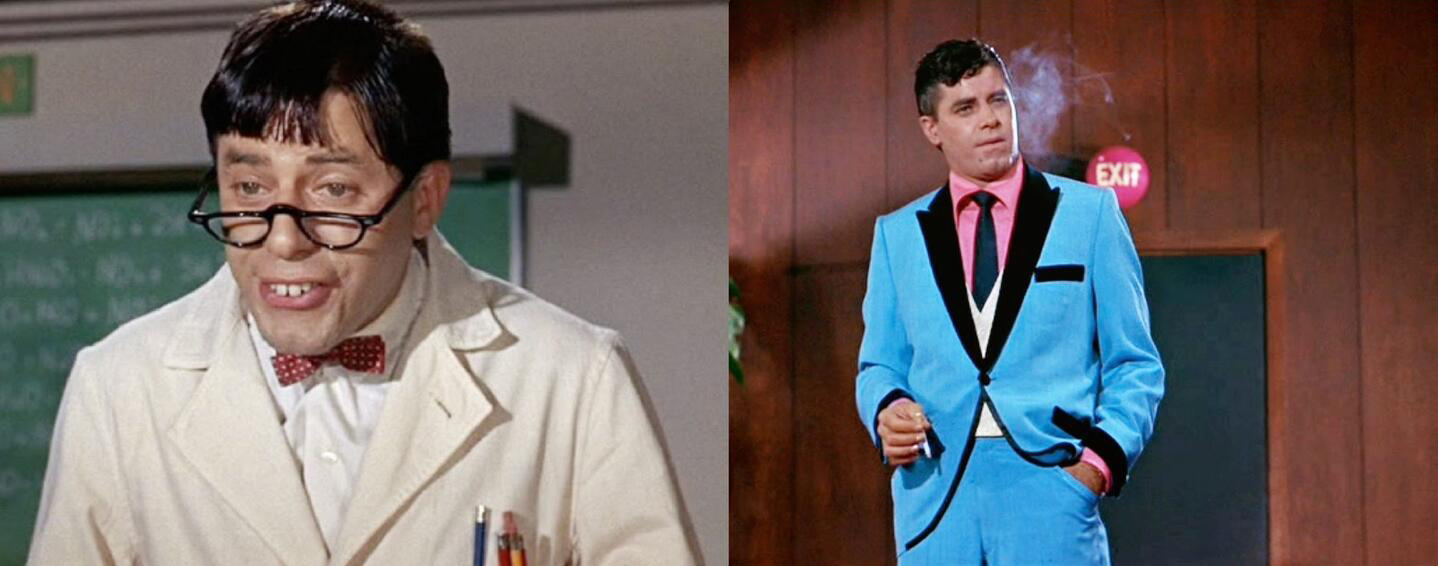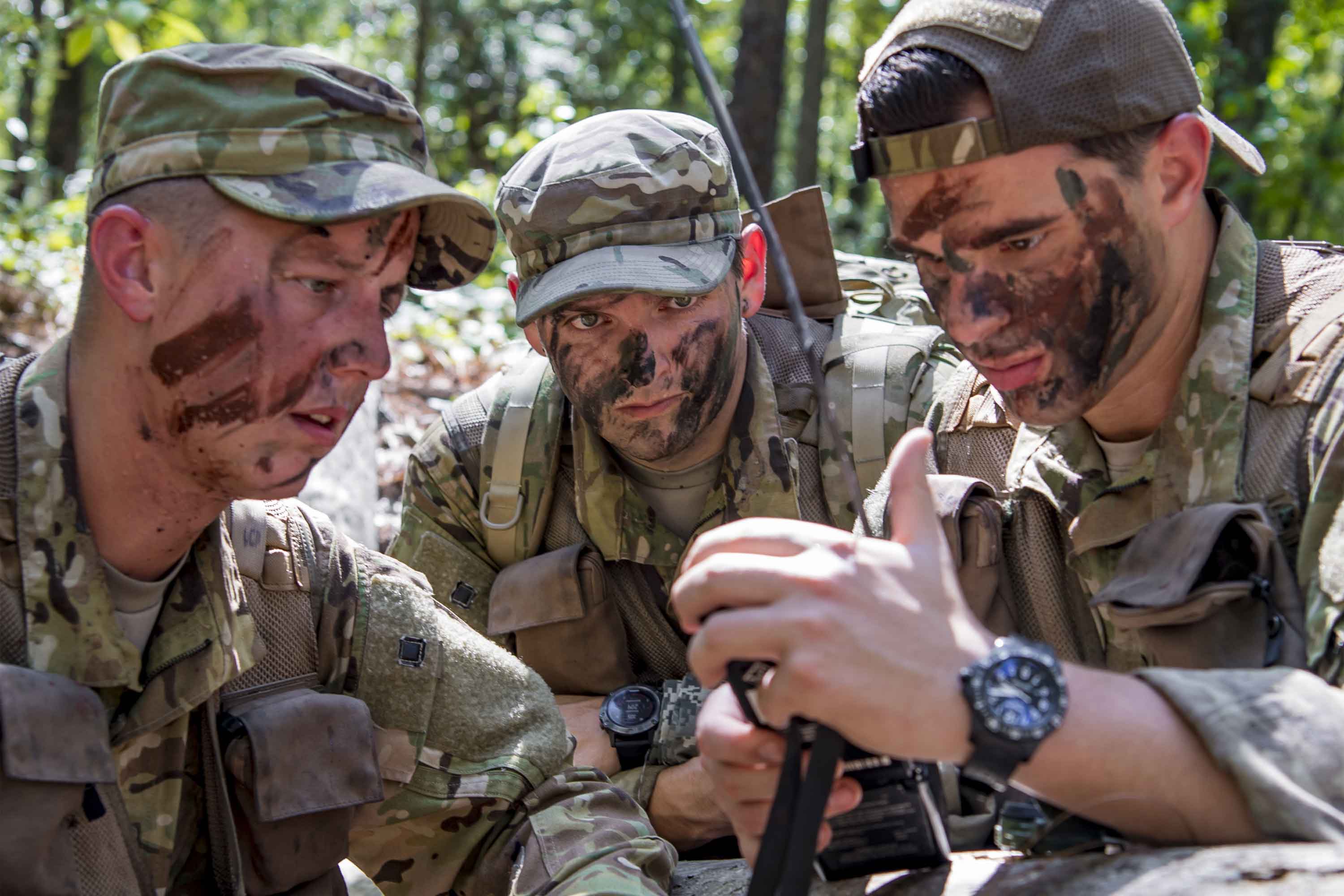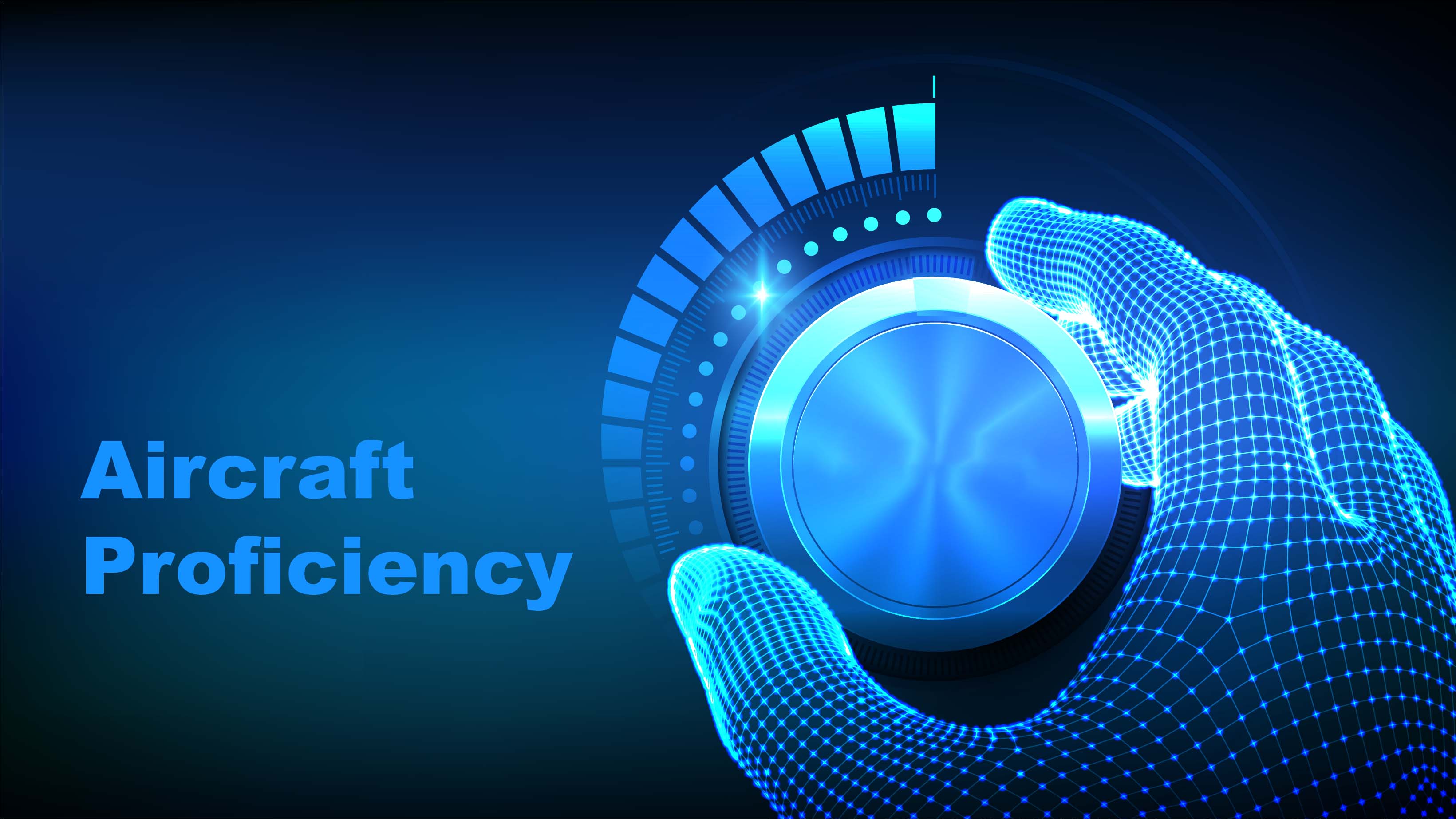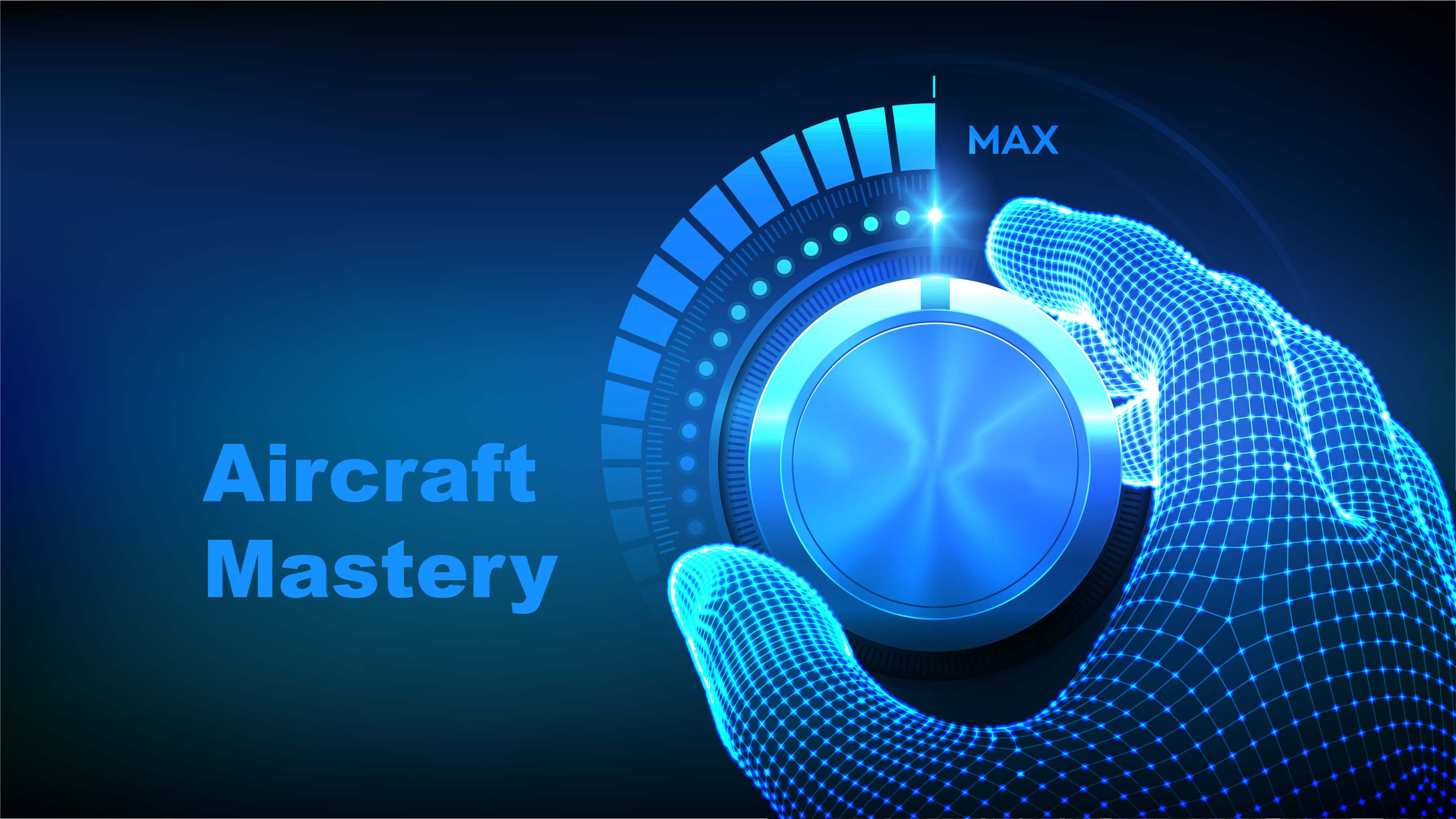Congratulations on the new job! You have a lot of challenges in front of you, but with the right attitude and some effort you can progress from the newest kid on the block, to proficiency, and on to mastery. But remember that you have more than the airplane to learn, you also have to learn company procedures and everything to do with the people you will be working with.
— James Albright

Updated:
2022-05-01
The normal progression for new pilots is to head off to aircraft initial training to get whatever ratings and licenses that are needed to legally qualify to fly the aircraft. Then you return to the flight department where you get immersed into local flight procedures and company Standard Operating Procedures (SOPs). Along the way, you learn about your peers and those you will be working for as well as those who will be working for you. You may find that your training for one or all three of these areas is assumed or even nonexistent. If that is the case, it will be up to you to be proactive and get the training you need.
2 — Initial SOP indoctrination
3 — Personal relationships introductions
The sooner you accomplish each of these initial steps, the sooner you will be considered an asset to the flight department. But even with this done, you need to resist the urge to "coast" along. Now is the time to become proficient in everything.
6 — Personal relationships proficiency
When you began this journey, you had to research manuals or ask local experts to find your answers. When you became proficient, you knew many of the answers without looking for them and for those you didn't have memorized, you had a pretty good idea where to look. The next step is mastery: people will start asking you for the answers. That's when you know you've done all of this right and are no longer just another "noobe." You are a master.

Part One
Getting qualified
When you start, you are unqualified in the aircraft, unfamiliar with local procedures, and unaware of the people you will be working with and for. Your first aim should be to fix all of that as quickly as possible.
1
Aircraft initial training
Getting qualified
There are at least three bad attitudes you can show up with for training and I have been guilty of all three:
- Intimidated. You have heard this will be the toughest course you've ever attended and you will be lucky to survive it.
- Unimpressed. You are coming from a much more complex and difficult aircraft and this one will be no big deal.
- Nonchalant. You don't really care one way or the other; if the course proves too difficult, you have other things to do.
All three attitudes will dull your efforts and you will end up getting less from the training than possible. Your expectations can also be colored by past experiences with, or the things you've heard about the training vendor. I've found a few techniques to improve my learning during the course and my performance for any evaluations to come. They've worked for me, you might consider giving them a try.
Preparation: asking the right questions
You may be reluctant to ask the pilots in your flight department about the training to come, fearing that you may appear intimidated by the training or somehow unqualified for the job. But if you don't ask, you could be setting yourself up to make the same mistakes they might have made. I have always asked, but I tended to ask the wrong questions. "How was it?" "It was okay, same old stuff." "Was it hard?" "Not really." "What should I study?" "Everything."
Even the right questions posed to the wrong person can yield useless answers. Try to identify someone who attended the course a few years ago and ask specific questions that can't be answered with a shrug of the shoulders and simple responses. For example:
- Are any of the aircraft systems unusual compared to what I've flown in the past? How so?
- Will the training emphasize aircraft systems, avionics, or flight procedures? Will the training neglect any of these?
- Do you have any study guides or other reference materials I can borrow?
- Did the training let you down when preparing for the written, oral, or flight evaluations? How could the training have been better and how can I make up for these deficiencies?
- What can I do in training to better prepare me for this job?
Example: My last type rating
I attended the tenth ever Gulfstream GVII initial ever held in 2019 and was told the best way to prepare was not to prepare. That was bad advice. I wish someone had explained to me that if I had zero fly-by-wire experience, I should study that. If you are in that boat, I cannot recommend the three videos here enough. (Scroll down and look for the three "GVII Flight Controls" videos. The course did a good job emphasizing what needed to be emphasized, but I wasn't aware that 100% of the written and oral questions would come from a prepared list. I skimmed the list; I should have memorized it.
Study time: learning at the right pace
You may be tempted to think the first few days of class are unimportant and that you don't really have to worry until you actually get into the simulator. I've heard this from a lot of fellow students: "I learn better by doing than thinking." This is precisely wrong.
The sooner you get the "book learning" down, the easier the flying will be. For example: memorizing aircraft limitations may seem mundane and, in the days of computerized jets, unnecessary. But knowing flap airspeed limitations, for example, will make your very first approach and landing easier. The syllabus at your next course may not be perfectly designed, but it has been used before. Attempting to learn as the course is designed should be a good start.
Example: My first jet qualification
In 1979 the Air Force's primary jet trainer was the mighty Cessna T-37 and the training was designed to start at full throttle and to keep it there until we graduated to the next airplane, four months later. On day one, we got a printed grid of 100 aircraft limitations and were told we had to have them memorized. Everyone eventually got there, but those who got there sooner did better in the airplane. Why? All about that here: Rule 26: Learn Early, Start With Zero and Add From There.
Classroom: taking notes
As is typical with most engineering students, I took notes in college using the mindless technique. I wrote things as quickly as I could during class, not applying any mind-power to what was happening at the moment of note-taking. The effort of writing shut down further learning until the writing was complete. These notes tended to be pretty sloppy and, as a result, useless for later reference. Lost on many of us is that note-taking serves two purposes. Yes, you can refer to the notes to remember something previously taught or to prompt further investigation. But there is another purpose: the very act of taking the note helps you to learn.
I've written about a better way to take notes here: Note Taking. The crux of the method is you are in class to learn and your notes capture the "gist" of what is being said and the only real verbatim note-taking are those things that you might not be able to get anywhere else. Once the notes are taken, you add to them to fill in any missing details. You do this preferably right after class but certainly no later than at the end of the day. I've found the best technique to do this is with a system invented by a Cornell University professor, details at the previously mentioned page: Note Taking
Example: My introduction to "E-Batts"
I went through GV initial in 2006 where I learned how Gulfstream had finally fixed the electrical systems in earlier aircraft that seemed to have been designed by Rube Goldberg. Just about all the GV aircraft systems were models of efficiency and elegant design. When the instructor explained the emergency batteries, he led off with a list of components that seemed unrelated. Most of the class dutifully copied the list, which was also in our manuals. I think most of us, myself included, were confused. The instructor thought about it and then drew a diagram that didn't appear in any of our texts. I copied the diagram precisely (see the photo) and later filled in the details. I noticed many of my fellow students were still busy writing the list and specs and few bothered with the diagram. They got bogged down by details when the big picture was truly more instructive.
Simulator: building blocks
Simulator time is expensive and is therefore limited. There are few things more frustrating than watching a pilot struggle with basic preflight duties that should have been mastered on the Day One simulator ride, robbing him or her of instrument approaches or emergency procedures on Day Four or Five. It is trendy for training programs to publish a list of training objectives for each event, and it is tempting to skip over these for the meat of the material. But it is a good idea to look at these to self-evaluate your progress. If you don't feel you've achieved a training objective by the time the syllabus calls for, you should put in some time and effort to fix this before your next sim period.
Example: My training in the "white rocket"
When my Air Force pilot training class graduated to the supersonic Northrop T-38 Talon, we felt as if we were already pilots, having mastered the Cessna T-37. After my first simulator session, my instructor said that the sooner I had every cockpit switch position memorized, the sooner I could get on with really learning to fly the jet. So I spent the weekend building a cardboard mock up of the cockpit and practiced basic procedures "in situ" before my next sim session. Getting the switchology down early made the next steps easier and allowed me to graduate to the next lesson sooner. I soloed early and graduated from basic aerobatics while some others were still trying to pass the first check ride. When I eventually struggled in the formation phase, I was so far ahead of the curve, my instructor had more time to devote to the hard stuff, since the easy stuff was already mastered.
Evaluations: understanding there are no enemies (usually)
The first time you take a flight evaluation, you can be forgiven for some nervousness. It is your first time, after all. Of course you can also be forgiven for some nervousness on every flight evaluation which follows. But the sooner you learn the secret to all flight evaluations, the sooner you will be able to deal effectively with that nervousness. What is the secret? Let me start with a clue. The most nervous check ride I've ever had was the first one I had to give as the flight examiner. Here is the secret:
The primary purpose of a check ride is to evaluate the training program, not the student. If the student fails the check, it is because the training program failed the student.
So what does this mean for you when learning to fly a new aircraft? With very few exceptions, your instructors want you to succeed and if you are at a loss to understand what is expected of you, the question "what do I need to do to pass?" can yield surprising results. If the evaluators see that you have put in the effort, they will be inclined to give you leeway when needed.
- It is tempting to push the academics to one side with the excuse you are a "doer" and not a "thinker." But acing the written tests sets you up for the "halo effect." When the examiners see that you put in the effort to learn the material, they will be inclined to say any hiccups in the simulator or airplane are slight aberrations, not patterns of deficiencies. Anyone can have a bad day in the jet, but you have control over your study efforts. Ask for practice exams. If they don't have any, ask for a sit-down session with an instructor for an impromptu quiz. This will give you a chance to test yourself under a spotlight, and will help identify any weaknesses that need further study.
- An oral exam is your chance to not only show mastery of the material, but confidence in that mastery. Here again, ask for a practice session. If the instructors aren't available, find an already qualified pilot. If none of them are available, try a fellow student.
- The flight examination, in the simulator or the aircraft, is likely to have a planned scenario or one of several planned scenarios. Asking others for a play-by-play of their experiences can help you anticipate what you need to be good at. A practice session just prior to the event can also be very helpful.
Through each evaluation event, it is key to understand that the system wants you to succeed and the system will provide clues to you about what it takes to succeed. But what if this isn't true? We've all heard stories of check rides where the system was out to get you. I think this is extremely rare, but it does happen. If you are certain your evaluator has this kind of mindset, it might be time to ask for a change of evaluators. But be mindful that this might set you up for another evaluator who wants to vindicate his peer. In any case, understand that a failed check ride shows the system failed, not you. Add the experience to your learning process and press on.
Examples: A very good check ride and one that wasn't.
My last type rating was in the Gulfstream GVII and it was going very well. The aircraft was so new it hadn't yet been certified and the instructors were learning it as we were. We were told most check rides took two hours per pilot and that it wasn't uncommon to need more time. I flew the first session and was paired with an excellent pilot who was making my life very easy. We had sailed through every scenario and only had one event left: the no flap approach and landing. I looked at the clock and realized we had been at it for just over an hour. The examiner said, "You two are doing so well, you know what is coming next, so let's skip the preliminaries. Just fly me a no flap landing and we'll call it good." So I briefed the other pilot that we would simply land with the flaps up and I didn't call for any checklists. I failed to remember that in this fly-by-wire aircraft, the flight control system assumed a contaminated wing below 200 KCAS with the flaps up, unless the wing anti-ice was on. When I let the speed fall below 200 KCAS the examiner spoke up again, "This was my fault, I shouldn't have led you to this maneuver without the checklist. Please run the checklist." We did so and caught our error. The examiner wanted us to pass. He could have busted us, but it would have been messy and he had already seen that we knew what we were doing. During the debrief, he said it was the best check ride he had ever given in the GVII.
In one my Air Force squadrons the examiners had the mindset that their standards were so much higher than the rest of the Air Force, that every student had to bust at least one check ride. If you had never busted a check ride in your Air Force career, you were due for what they called a "humbling bust." I was due for such a bust. I write about this in Chapter Five of Flight Lessons 3: Experience. The examiner was intent on giving me the humbling bust and in the end said he had done just that. The organization itself was so alarmed by his efforts, the bust was erased.
But what if you do bust the check ride because you had a bad day, because the other pilot had a bad day, or the system was out to get you? No matter the reason, your employer spent a lot of money on you to get you qualified. Your employer wants you to succeed and would rather spend a little more money for some retraining and a recheck, rather than have to start over. Having a good attitude at this point will serve you well.
2
Initial SOP indoctrination
Learning the standards of your operating procedures
Your performance as a member of a crew depends on knowing what is expected of you and what to expect from others; this is a fundamental tenet of effective crew coordination. You should never have to guess at procedures. Having a standardized mental model for everything you do will eliminate the guesswork. Standard Operating Procedures (SOPs) should serve to provide a consistent, standardized model of each task that must be performed by each crewmember during each phase of flight and during any reasonably anticipated abnormal, non-normal, or emergency situation. SOPs must be kept current and may be individually developed by the operator or by incorporating those procedures found in their aircraft operating manuals into their daily operations. Once established, the SOPs must be applied with consistency and uniformity throughout the operation.
Good SOPs
Implementation of any procedure as an SOP is most effective when:
- The procedure is appropriate to the situation.
- The procedure is practical to use.
- Crewmembers understand the reasons for the procedure.
- Pilot flying (PF) and pilot monitoring (PM) duties are clearly delineated.
- Effective training is conducted.
- Adherence to the standard is emphasized by flight crews, and reinforced by instructors, check pilots, and managers alike.
- Crewmembers are aware of the potential risks/hazards if SOPs are not followed.
Source: AC 120-71B, ¶1.1
Sources of SOPs
Ideally, you will find detailed procedures in your aircraft manuals that are supplemented by your company's operating manuals. Knowing which to follow can be a source of some debate.
- Aircraft manufacturer provided SOPs — Depending on the age of your aircraft and how much it has been modified beyond the manuals provided, you may find very detailed and pertinent SOPs in Airplane Flight Manuals (AFMs), Aircraft Operating Manuals (AOMs), Pilot Operating Handbooks (POHs), or other materials issued by the aircraft manufacturer. In some cases, however, these manuals will be out of date, no longer applicable, lost, or not up to current best practices.
- Training vendor SOPs — A training vendor may provide a robust set of SOPs that they might offer as a suggestion or as mandatory to pass a check ride. I've been a part of flight departments that adopted these procedures completely, rationalizing that we wanted to "fight like we train." I tend to look at them as suggestions, worthy of consideration after the manufacturer's inputs.
- Company provided SOPs — Your company should have a stated position on SOPs that could be as simple as, "follow the flight manual." Company SOPs may also specify everything you need from start to finish.
Learning SOPs
The first step in learning a new set of SOPs is to ask a seasoned veteran in the flight department about what is expected. Don't be surprised if you get a noncommittal answer; it could be that the SOPs are so ingrained that he or she never thinks about them. You might be better off asking a few specific questions:
- Are there any regular briefings prior to: starting the preflight, starting the engines, before taxi, before takeoff, before descent, before an approach, before landing, after landing, after the flight is completed?
- Are there any recommended callouts during takeoff?
- Does a pilot who is not the Pilot in Command (PIC) have the authority to call for a takeoff abort or to execute an abort without the PIC's concurrence? If not, what is the protocol?
- What callouts are expected during approach?
- Who handles the radio and which radio is normally used for ATC communications?
- How is automation handled between pilots and does this change if the autopilot in engaged? What about the autothrottles?
- How are altimeters set when issued a new setting before the transition altitude or level?
- Is there a specified protocol for cockpit duties when issued a new altitude clearance?
- Are there any airfield specifics that change any of these procedures?
Once you've identified the applicable SOPs, the best way to learn them quickly is to write them down. Keep a notebook with the SOPs and expect to edit as your understanding improves. The notebook is a work in progress and can be as simple or detailed as needed. (See the hand-drawn visual traffic pattern note page from my earlier days flying 4-engine aircraft.)
What if your flight organization doesn't have any SOPs?
Without active intervention, things go from well ordered to disordered, from organized to chaotic. (This is the theory of entropy.) You will see this throughout life and it is also the case for most flight departments: the normalization of deviance is a natural process. Well established flight departments with people that have been in charge for a while will naturally gravitate from SOPs to "let's just get along." This can be very dangerous. See: The Normalization of Deviance.
I have been in this situation a few times. This provides you with an opportunity to have a positive impact on the safety of the operation, but will require a great deal of tact and patience on your part. In the worst case scenario, you might find the effort too great and the environment too hostile. In that case you might find yourself with no other choice than to leave. But short of that, you can make things better.
- Research. Examine the applicable aircraft manuals, government regulations, and training vendor source materials. There are probably good SOPs already in place that have been forgotten or even consciously ignored. You should also look at AC 120-71B, Standard Operating Procedures and Pilot Monitoring Duties for Flight Deck Crewmembers.
- Lead by example. Start implementing these SOPs on your own, where possible. Making a "One thousand feet to level" call where the others remain silent might prompt a question or two. Simply say you are doing it for your own benefit. For more about proper callouts, see: callouts.
- Encourage discussion. When asked about your preference for SOPs, answer that you believe these make you a safer pilot. Don't frame it in the negative: "Not following SOPs is unsafe" can be interpreted as "you are an unsafe pilot."
- Volunteer. Offer to come up with an initial draft of SOPs you think will make flying easier and safer. Present these as possible ideas and encourage others to help develop their own ideas.
Be mindful of the fact you are new and any challenges can be seen as a threat to the status quo. It might be best to gradually ramp up your efforts after you have gotten to know your peers and have established yourself as "one of the good guys." That leads us to . . .
3
Personal relationships introductions
Getting along
There is an old saying in both military and civilian flight departments that generally holds true: "hire the person first, the pilot second." Of course a basic level of pilot performance is assumed, but people skills tend to be more important than pilot skills. If you can't get along . . . you won't.
Your first few weeks in a new job can be critical. They can set you off on the right foot that will win allies and ease your progress from novice to master. Or they can earn you enemies that will unconsciously (or consciously) throw roadblocks in your way. Which way you go depends both on you and them. As is often said, you only get one chance to make a good first impression.
First impressions
Making a good first impression in a new environment is a learned skill. I find that some people are natural at it, others, not so much. But those who lack the skill may not realize just how bad they are at it.
The handshake
Some men consider the handshake to be an early chance to establish alpha male status and have perfected techniques to get the "upper hand" in the handshake. Their techniques involve moving their hand towards yours quickly and starting the grasping motion early, so as to put you in the embarrassing position of having only your fingertips grasped in the so-called "limp fish" handshake. Let's avoid that.
- Stand up straight
- Make and maintain good eye contact
- Offer your open hand held so the palm is out horizontally and the thumb is point straight up
- When you first feel contact, push your hand forward until the webbing in your hand makes contact with the webbing in theirs
- Grasp firmly, but not so much as to cause their hand to deform
- Shake twice, release
In these days of pandemic pandemonium, we can avoid the competitive handshake altogether with a fist or elbow bump. But if a handshake is offered, you need to reply in kind. A few pointers: Handshake etiquette.
I've been in the situation where the other person took this all with a competitive zeal and grasped so quickly I ended up with only my fingers in his grasp. What to do? "Let's do that again," can let them know that you know what they just did and regains any lost style points. No matter how you do this, make sure you make good eye contact.
Eye contact
The art of maintaining good eye contact isn't as simple as you might think. In general, you want to be looking at another person's eyes when first introduced and whenever they begin speaking or say something with added emphasis. Should you look at them when you are speaking? Usually, but maintaining a "laser lock" as you speak can be seen as a bit creepy or as an attempt to intimidate.
Making and keeping good eye contact is a sign you are interested and care about the other person, which in turn inspires them to be interested and care about you. More about this: Charisma on Command: Eye Contact.
Moderating eye contact is a good way to show thoughtfulness and confidence. More about this: How to be Confident in Any Situation.
Perhaps the biggest positive of maintaining good eye contact is that it avoids the negatives of poor eye contact. Keeping your eyes down below the other persons eyes is a sign of submissiveness and weakness. Wandering eyes are a sign of disinterest at best, poor focus at worst.
Posture
You know you should "stand up straight" but often end up with your shoulders angled forward and neck angled down with your head in an unattractive tilt. You are also probably aware that none of this looks good.
Jerry Lewis played the social outcast, Professor Julius Kelp. in the 1963 movie "The Nutty Professor." A science experiment turned him into the charismatic man about town, Buddy Love. Much of the transformation had to do with clothes, grooming, and demeanor. But it was also due to posture.
Whenever being introduced, having the conscious thought, "shoulders back," can do wonders for your posture and the chances of making a good first impression. While you can instantly improve your posture, you cannot make it perfect without some preparation. More about this: How To Instantly Improve Your Posture
Facial expression
You are who you are and changing your facial expression to be someone else can do more harm than good. Somebody who never smiles can be seen as someone who will never be pleasant; but somebody who only smiles can be seen as somebody who doesn't take life seriously enough. Clearly there must be a balance.
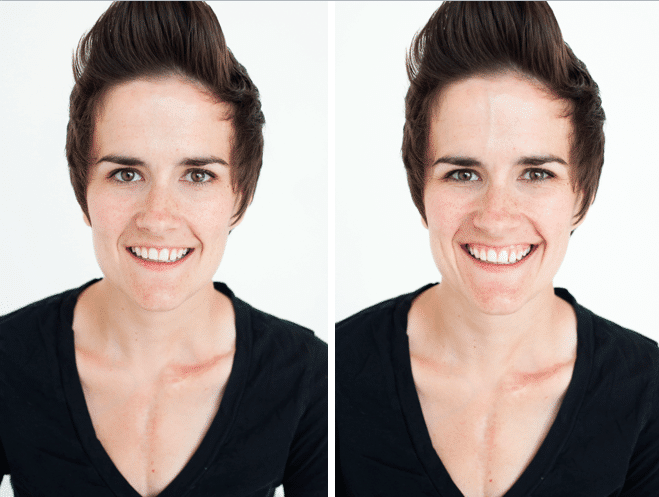
Fake vs. real smiles, scienceofpeople.com
So, the obvious bit first. Don't appear angry, mad, sad, or display any emotions that tell people you are not approachable. But now for some of us the problem is trying to appear happy when our natural look is something less than that. You cannot fake a smile. A genuine smile shows up in your eyes. If you have difficulty with his, stand in front of the mirror and tell yourself to smile. Now do the same thing while telling yourself something that genuine pleases you or makes you laugh. The next time you are introduced to someone, duplicate the latter, not the former.
Voice
You know what a confident voice sounds like. You also know what your voice sounds like. If the two ideas don't match, there are ways to fix any problems. In the short term, realize that volume, tempo, and articulation are things you can fix right now if you are conscious of your deficiencies. Record your voice and play it back. Would that person impress you?
- Volume. A person an arm's length away from you should be able to hear everything you say. If not, you are speaking too softly. A person two arm's lengths away should not be able to hear you. If so, you are speaking too loudly.
- Tempo. Most of us can comprehend around 120 spoken words a minute. Slower than 100 words a minute will try the patience of most listeners. Faster than 180 words per minute will be hard to understand and may make the speaker seem nervous.
- Articulation. Does she sell sea shells by the seashore? You don't need to be a master of tongue twisters, but if you've ever been accused of mumbling, try to finish every word with an emphasis on each ending, especially those with consonants.
You are not stuck with the voice you have. I have been a public speaker for decades and I still have problems with articulation and volume. But I am working on it! The following YouTube videos offer me some help: How to Articulate Better and How to Speak Louder. This channel also has help for a host of other issues too.
Hidden agendas
Just as YOU never get a second chance to make a good first impression, THEY will also suffer from the fact that "the first impression is often the last impression." As you get familiar with your new environment, you should take note of any first impressions that give hints to problems for the future. Identifying these early may help you to deal with them in the future, or to know when to steer well clear of potential problems.
Ego-driven
If you meet someone who in the first bits of conversation lets you know half of their resume, you will have met someone with a fragile ego that will look upon you as a possible threat.
Hierarchy-driven
Some flight departments are run like airlines, where seniority means everything. Some people in even small organizations will be mindful of job titles, date of hire, or crew qualification. You will find people who will look upon any available measure as a way of putting themselves above others. In my first civilian flight department we had a pilot who judged all others by the number of oceanic crossings they had.
Clique-driven
Larger organizations can divide themselves into the "in crowd" and everyone else. Remarkably, there can be multiple in crowds who also lump the other in crowds into the everyone else category. I was once in a large flight department where the Army veterans looked down on everyone else and the non-military types did the same, leaving us Air Force types as outsiders to both.
Old-school vs. new-school
Forty years ago I was in an Air Force squadron where a number of the old school pilots reacted negatively to the prospects of being joined by female pilots. When we got word of our first new hire female pilot, one went so far as to ask for an immediate transfer. I thought we were past such archaic thinking but recently heard the same ideas in a large corporate flight department.
Survival tactics
Expect the best from your new peers and leadership; I think most people at our level of aviation intend to be professional and finding someone with a hidden agenda is rare. But should you be so unfortunate, here are a few survival tactics:
- Accept suggestions and criticisms cheerfully.
- Allow them to flex their egos but don't appear obsequious. You want them to know you have an open mind and are here to learn from them.
- Take note of who says what. If they are status conscious, forgetting their status can become a negative. If they prove themselves to be consistently wrong about everything, you are better off knowing that sooner than later.
- Realize that in a war of egos, the newer person usually loses. Be satisfied knowing that time will eventually flush out their real value in the organization. Prove yourself with actions, not self proclamations.
- Know when to go nuclear. If the problem is minor, try to deal with it as best you can. If the problem will break something or someone, try to fix things with as little collateral damage as possible.
Part Two
Becoming proficient
As a qualified and functioning member of the organization, it may be tempting to throttle back and relax for a while. You've come a long way, you might think, you deserve some time to just coast on what you've already accomplished. You can definitely do that. But you shouldn't.
4
Aircraft proficiency
"Knows the airplane . . ."
When you graduate from just about any initial flight course and congratulate yourself and your classmates for yet another type rating or other qualification, you are entitled to a celebration and a pat on the back. But once you've done that, you should realize that what you have is what the trainers consider a minimum level of knowledge, skill, and proficiency to operate the aircraft. That won't be good enough for the insurance company and it shouldn't be enough for you. The learning has just begun.
Next level knowledge
I've heard that "you will never know as much as you do right after initial." That seems to be true of many pilots. I've seen this when paired with new pilots at recurrent and I've heard this from many instructors. That is a crying shame, since the knowledge you get at initial is the minimum level to become qualified.
You leave initial with "squishy" book smarts that need practical experience to solidify. During a month of initial training you have limited time and resources. Once that is done, you should add to your list of study materials to incorporate more information as well as reiterate the knowledge you had before. Your flight experiences will help you expand your scope from "what happens" to "why it happens."
You will know you've reached the next level of knowledge once your peers start asking you for the answers instead of the other way around.
Technically qualified for everything
First officer? You need to work at becoming a captain. Captain? That's very good. But are you a captain qualified for every type of trip the flight department can expect?
Every flight operation will have its own challenges. Some challenges only require you see it once from a seasoned pro, and then demonstrate your ability under supervision. Others will require formal training and some kind of written authorization. A few to consider:
- "High minimums" sign off — Some operators will place higher weather minimums on you until you have a minimum number of hours or approaches in actual weather.
- Special airport qualification — Flying into some mountainous area airports can be especially challenging. You can also find special restrictions for airports with high elevations, steep approach angles, unusual approach geometry, or very tight noise restrictions.
- International operations — Many international operations required Operations Specification or other approvals. The approvals are often contingent on the pilots meeting minimum training and experience levels.
- Automation approval — Aircraft equipment can greatly expand an operator's capability but will place additional training and certification demands on the pilot. If your aircraft is equipped with data link, enhanced or synthetic vision, a Heads Up Display system, or other advanced technology, you might be qualified to fly the aircraft, but not with all of its equipment.
5
SOP proficiency
"Knows the job . . ."
Every flight operation — even a noncommercial flight operation — should have Standard Operating Procedures (SOPs) that provide instructions for its personnel about just how it is they should be doing their jobs. If you are flying internationally, it is a requirement. For most insurance policies, it is highly recommended. If you are told you don't have one, the person telling you may simply be unaware. If you really don't have any kind of company operations manual, you need to fix that. But let's assume you have SOPs and a good company manual.
Book smarts
When you were new, you were in "learn mode" when it came to company SOPs and probably spent a fair amount of time asking questions or being reminded about what to do, and what not to do. As you gained experience and proficiency, this kind of instruction became less and less necessary. You will know you've become SOP proficient when you not only know what the book says, but have a good idea of what the book should say but does not. More importantly, with your added credibility, others will be interested in your opinions on how to make things better.
An SOP advocate
When you become truly proficient in your company SOPs, you will be able to explain the rationale behind each without having to resort to saying, "because the book says so." Instead, you should realize the reasoning behind each and be able to draw upon accident case studies that illustrate the problems with failing to follow SOPs. See: Case Studies.
6
Personal relationships proficiency
"Works well and plays well with others . . ."
Having been in the business of putting crews together for many years now, my primary concern has always been: "Will they get the job done?" But beneath that thought is another: "Will they get the job done safely, without hurting anyone, without breaking anything, without embarrassing anyone, and without turning members of the crews against each other?"
This may seem to be a concern that shouldn't be. We are all professionals, after all. I've heard of one fist fight in the cockpit between two pilots in a King Air. I've witnessed quite a few shouting matches. But the most frequent evidence of poor cockpit decorum is when one member of the crew tells me, "I don't want to ever fly with that $#@! again." I once had a pilot tell me, "I get along with everyone. If they can't get along with me, it is a 'they' problem, not a 'me' problem." I cautioned the pilot that it is really a "we" problem.
As the person running the show, I just want the job done without any collateral damage. If you can do that for me, I will consider you to be a leader I can trust to handle whatever comes your way without the need for outside intervention.
A trusted leader
As a line pilot in charge of nobody but yourself, you might think that leadership is a topic for someone else, maybe for you at some point in the future. You can be sure that most of your peers feel the same way, and that makes you no different (or better) than they are. But consider this: everyone has a role to play in an organization and leadership is needed at all levels. A pilot who can solve problems on the road, and bring out the best in everyone in the crew, is showing leadership of the highest magnitude.
So where do you start developing your leadership skills. I have a course that might interest you: Leadership.
No supervision required
When are you really an "established" member of the flight department? I think a good argument can be made that this happens when the scheduler can ink your name into the Pilot in Command block of any trip sheet the organization can expect, and be confident you will get the job done.
The day this happens is when you take on a new status in the organization. You are no longer a number to be plugged into a trip sheet. You are a part of the team that gets the job done. You become a partner with those calling the shots. Many will achieve this status and the more of you in the organization, the better. Most will happily stay at this level. But you should consider the next step. The step above proficiency . . .
Part Three
Achieving mastery
Most pilots go beyond basic qualification and move on to proficiency. Few pilots achieve mastery. If you want to really be an asset to the organization and to maximize your personal growth, you need to master all that you have learned.
7
Aircraft mastery
The best way to learn is to instruct . . .
If you've been an Air Force pilot in more than one (what they call) weapon system, you are likely to have noticed a common progression of pilot qualification. You typically start as a copilot or wingman. For those of us in multi-piloted aircraft, from copilot you hope to become an aircraft commander. (Most copilots do.) Then you hope to become an instructor. (Less than half do.) And then you might become an examiner. (Perhaps ten percent.) In the fighter world, there are similar steps. Add to this, there might be other qualifications. Let's say your aircraft type and unit are charged with sending Army troops out the back with a parachute. This is called "air drop" and you may have to qualify as an air drop copilot, aircraft commander, instructor, and examiner. The beauty of this system, is everyone understands there is more to learn and there are metrics to show where you are in the progression. You may have mastered instrument approaches, for another example, and still be an air drop novice.
Now what about in the civilian world where this kind of progression isn't required or many not even exist? At what point can you say you have mastered the aircraft? The trite answer is you never master the aircraft because there is always more to learn. Maybe. But I believe you can consider yourself well on the road to aircraft mastery when you become a competent instructor. This isn't to say your job title has to say "instructor" or you have to have a license that brands you as such. It is to say that when your peers come to you looking for instruction, you are an instructor.
Even if you've never instructed before, you can start right away by picking a topic that has troubled you and your peers, take a deep dive, and learn all you can. Then put together a short presentation and teach. It is vital that you teach others for two reasons. First, it will inspire you to do the research and put in the necessary effort. (You don't want to look foolish in front of your fellow pilots.) Second, it subjects your work to an outside review and will help you improve on your work. And there is a bonus reason: every time you do this you will get better at it.
8
SOP mastery
Even a "perfect" SOP needs adjustment over time . . .
What does it mean to have a mastery of your Standard Operating Procedures? Does that mean you have them all memorized and never make any mistakes in executing them? I don't think so. Memorizing procedures is meaningless if you don't execute them correctly or when called for. Mistakes are inevitable; don't let mistakes discourage you from the effort.
I think SOP mastery means you know of the procedures, follow them as best you can, and understand them well enough to sense their shortcomings. You have a good idea about the strengths and weaknesses of your company SOPs and are working to improve them. A SOP that served you well in the past may need changing with changes in aircraft, personnel, or the environment. A few ideas to consider:
9
Personal relationships mastery
The Holy Grail
Is it possible to become a master of personal relationships in even the smallest and most simple organizations? I don't think so, we humans are just too complicated and unpredictable. What works well for one group can be a recipe for disaster with the next.
As you make your way from novice to seasoned pro in your new flight department, it makes sense to seek mastery of your aircraft and the operating procedures needed to fly the aircraft safely. But the minute you think you have all the people figured out, you will discover you are wrong. I try to remember that everyone I am working with have their own motivations that may or may not align with my own. Part of my role as a leader is to steer those motivations towards those of the group, while trying to help them along the way. As it turns out, my role as a peer is the same. I do all of this through decisions I make, through personal interactions, and instructing. The instructing includes personal interactions, formal lessons, speeches, and writing. One of the writing efforts meant to help others with personal relationships is a list of 26 rules I've compiled over the years. They aren't perfect. In fact, they change now and then. But I offer them as yet another effort along these lines: The Rules.
References
(Source material)
Advisory Circular 120-71B, Standard Operating Procedures and Pilot Monitoring Duties for Flight Deck Crewmembers, 1/10/17, U.S. Department of Transportation
